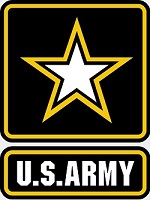PMA P0345 US 155mm Gun Motor Carriage M40 Self-Propelled Gun - "Big Bruiser", B Battery, 937th Field Artillery Battalion, Korea, 1953 (1:72 Scale)
"We will carry out a campaign characterized by shock, by surprise, by flexibility ... and by the application of overwhelming force."
- CENTCOM commander General Tommy Franks commenting on the conduct of Operation: Iraqi Freedom, March 21st, 2003
 The 155 mm Gun Motor Carriage M40 was an American self-propelled artillery vehicle built on a widened and lengthened Medium Tank M4A3 chassis, but with a Continental engine and with HVSS (Horizontal Volute Spring Suspension), which was introduced at the end of the Second World War.
The 155 mm Gun Motor Carriage M40 was an American self-propelled artillery vehicle built on a widened and lengthened Medium Tank M4A3 chassis, but with a Continental engine and with HVSS (Horizontal Volute Spring Suspension), which was introduced at the end of the Second World War.
Equipped with a 155 mm M2 gun, it was designed to replace the earlier M12 Gun Motor Carriage. Its prototype designation was the T38, but this was changed to the M40 in March 1945.
A single pilot vehicle was used in the European Theatre in 1945 by the 991st Field Artillery Battalion, along with a related 8 inch Howitzer Motor Carriage T89, (later re-designated the M43 Howitzer Motor Carriage) which was sometimes also equipped with a 155 mm barrel. A total of 311 out of a planned 600 were completed by the Pressed Steel Car Company before the end of the war, 24 of which were later converted into M43s. From there it was deployed during the Korean War.
After World War II, the M40 was used by the British Army, who designated it 155 mm SP, M40 and called it Cardinal in the tradition of using ecclesiastical names for SP artillery, such as Deacon, Priest, Bishop and Sexton.
Pictured here is a 1:72 scale replica of a US 155mm Gun Motor Carriage M40 self-propelled gun that was nicknamed "Big Bruiser" and attached to B Battery, 937th Field Artillery Battalion, then deployed to Korea during 1953.
Now in stock
Dimensions:
Length: 5-inches
Width: 2-inches
Release Date: May 2022
Historical Account: "Red Legs" - The first nine months of the Korean War saw U.S. Army field artillery units destroy or abandon their own guns on nearly a dozen occasions. North Korean and Chinese forces infiltrated thinly held American lines to ambush units on the move or assault battery positions from the flanks or rear with, all too often, the same disastrous results. Trained to fight a linear war in Europe against conventional Soviet forces, field artillery units were unprepared for combat in Korea, which called for all-around defense of mutually supporting battery positions, and high-angle fire. Ironically, these same lessons had been learned the hard way during recent fighting against the Japanese in a 1944 action on Saipan, not Korea, aptly demonstrates.
Pacific theater artillery tactics were discarded as an aberration after War World II, but "Red Legs" soon found that they frequently had to fight as doughboys and must be able to handle the situation themselves if their gun positions were attacked. A second problem with artillery in Korea was felt most keenly by the soldiers that the artillery was supposed to support -- the infantry. Commanders at all levels had come to expect that in any future war, they would conduct operations with fire that equaled or even surpassed the lavish support they had recently enjoyed in northwest Europe. It was clear almost from the beginning, however, that this was not going to happen in Korea because there was a shortage not only of artillery units but also of the basic hardware of the cannoneers craft guns and munitions.
Until the front settled down into a war of attrition in the fall of 1951, which facilitated the surveying of reference points and positioning of an elaborate grid of batteries, fire direction centers, and fire support coordination centers, massed fires were achieved by shooting at unprecedented speed. This tactic exposed the
fact that the huge surplus of World War II munitions was actually deficient in some calibers.


